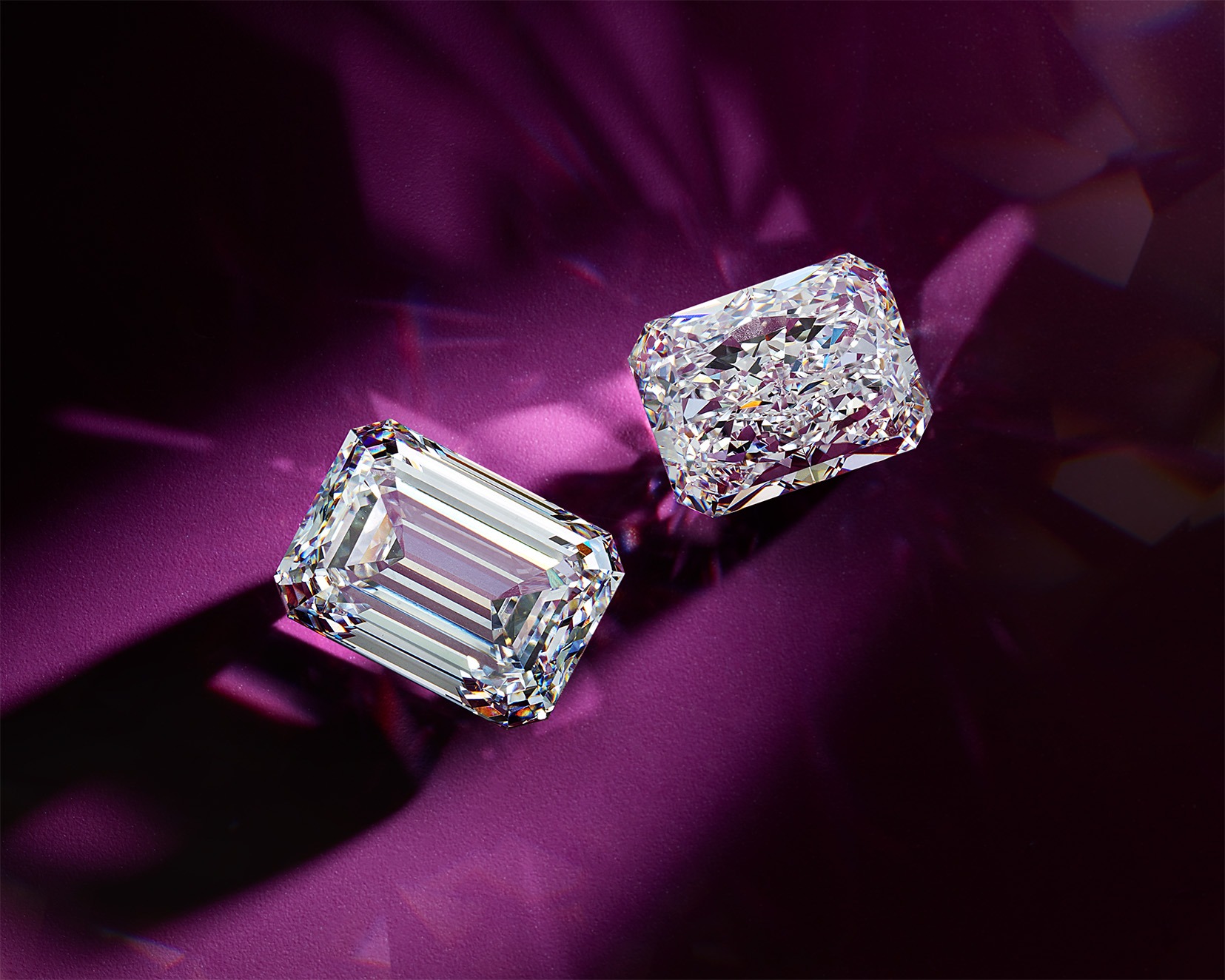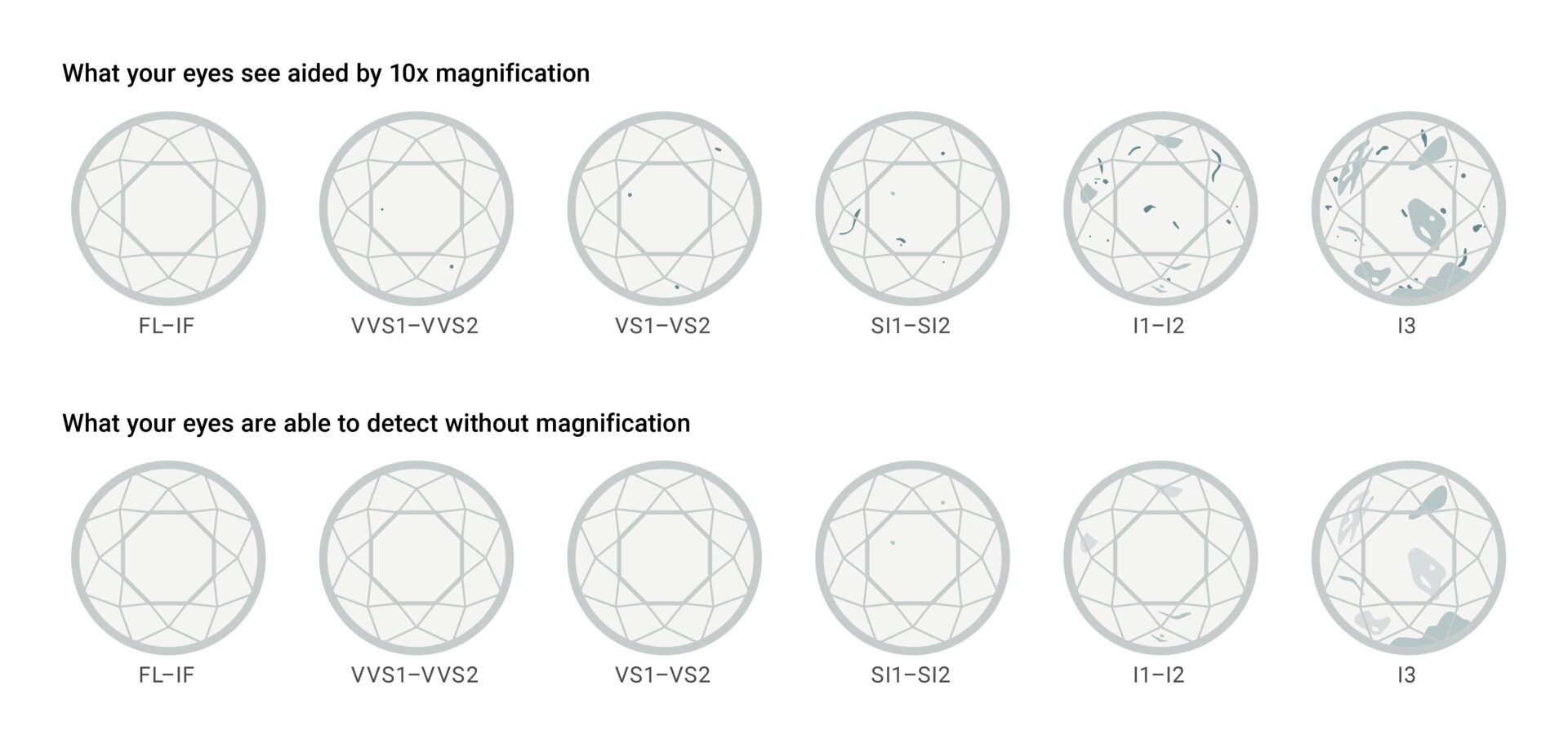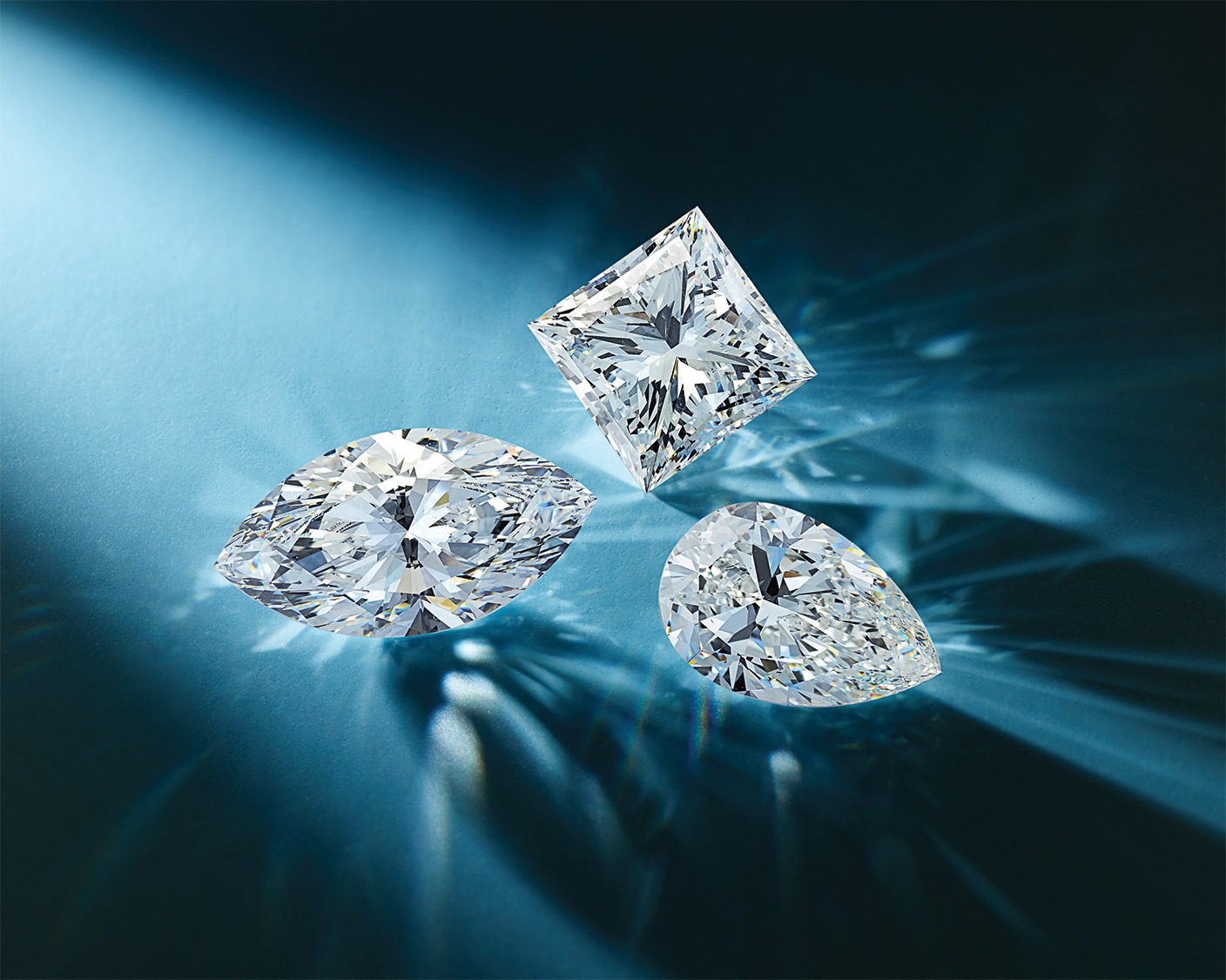What You Need to Know About Diamond Clarity
Educate your customers with crystal clear explanations on diamond clarity and how it impacts value.
Optical brilliance and beauty meet in the captivating realm of diamonds. The mesmerizing sparkle and timeless appeal make it easy to love. However, every diamond purchaser makes their decision for a different reason. Perhaps they are looking for a specific cut or size to fit their design vision. Or maybe they want a diamond with stunning visual clarity. These various reasons for placing value on a diamond are commonly referred to as the 4Cs of diamonds. With understanding and education, a customer can find the right diamond to fit their needs.
Among the 4Cs of diamonds, clarity possesses a unique role and significance. It dives into the diamond’s inner world, telling a story of a journey through time. The concept of clarity allows us to understand a diamond’s history, formation, and the forces that shaped it.
Let’s look at diamond clarity, what it means, and how you can use it to spark a conversation with a customer.
What Is Diamond Clarity?
Diamond clarity is a general term for internal and external visual characteristics called inclusions and blemishes. Think of these characteristics as the diamond’s fingerprint — exclusive to each individual diamond. Whether from the earth or within a laboratory setting, these characteristics are the result of the formation process. While some might choose to see these characteristics as flaws or imperfections, inclusions and blemishes are what make each diamond unique and tell a story.

Understanding Inclusions and Blemishes
Inclusions are the internal characteristics observed in diamonds while blemishes are the external characteristics. A vast majority of diamonds on the market will have some form of inclusion or blemish, even if they are imperceptible to the naked eye. It’s exceedingly rare to find a diamond that is completely flawless. To view these characteristics and even allow customers to see them, use either a jeweler’s loupe or microscope with at least 10X magnification.
While grading and observing these characteristics takes specialized training, here are a few common inclusions and blemishes to look out for.
Inclusions
- Feathers are a general term to refer to a fracture within the diamond. They often appear white and feathery.
- Pinpoints are very small crystals that look like a tiny dot.
- Clouds are groupings of tiny pinpoints that give off a hazy appearance when clustered together.
- Crystals are minerals that are contained within the diamond. Crystals that are colored or reflecting light are typically more obvious to the naked eye and less desirable.
- Needles are very thin and elongated crystals that appear like a tiny rod when magnified.
- Twinning Wisps are a chain-like series of pinpoints, clouds, or crystals that form along the diamond’s growth plane and appear in a chaotic pattern.
Blemishes
- Scratches are thin white grooves that appear across the diamond’s surface.
- Polish Lines are transparent or white parallel grooves that are left behind from careless polishing. They can occur on any facet, but do not cross the facet junctions.
- Naturals are portions of the original rough diamond that are left on the surface of the polished stone, typically near the girdle.
- Nicks are small, wedge-shaped notches that occur along facet junctions, usually along the girdle edge or at the culet.
Depending on the location, amount, and appearance of these characteristics, they can have an impact on the overall value of a diamond. So, how are these characteristics graded?
Understanding the Diamond Clarity Grading Scale
The Gemological Institute of America (GIA) clarity grading scale is considered by the majority as the industry standard. The scale ranges from Flawless to Included.

- Flawless (FL): no inclusions or blemishes are visible under 10X magnification.
- Internally Flawless (IF): no inclusions are visible under 10X magnification; however, some minor blemishes are.
- Very Very Slightly Included (VVS1 and VVS2): minute characteristics are present but either extremely difficult (VVS1) or very difficult (VVS2) to see at 10X magnification.
- Very Slightly Included (VS1 and VS2): minor characteristics are present but either difficult (VS1) or somewhat easy (VS2) to see at 10X magnification.
- Slightly Included (SI1 and SI2*): noticeable characteristics are present and either easy (SI1) or very easy (SI2) to see at 10X magnification.
- Included** (I1, I2, and I3): characteristics are obvious under 10X magnification.
*Some laboratories use an additional grade called “SI3” in their clarity scale, representing a top I1 grade diamond.
**The word “Imperfect” is sometimes used instead of “Included” for the bottom grade category.

Tips for Selling Diamonds Based on Clarity
With these basics in mind, here are a few tips for selling diamonds based on their clarity.
1. Cosider Diamond and Facet Size
All inclusions and blemishes are weighed in comparison to the diamond’s size. Larger diamonds and facets make it easier to notice them. For smaller sizes, a lower clarity will provide a better price without noticeable effect on overall visual quality. For larger sizes, it might be a preferable decision for the customer to invest in a diamond with a higher clarity grade for optical appeal.
2. Use Visual Aids
Letting your customer see the characteristics, or lack thereof, will engage them in the process. While a diamond plot might help point out the nature and location of the characteristics a diamond possesses, viewing them through a loupe or microscope gives context and perspective on these unique markers.
3. Remember That the Setting Matters
There are many settings that can mask inclusions or blemishes that are perceivable to the naked eye. Characteristics located closer to the girdle are much easier to cover with prongs. This is a strong selling point to any customer with budget constraints.
4. Celebrate the Diamond's Character and Uniqueness
Remember that inclusions and blemishes do not make a diamond any less beautiful. They make each diamond one of a kind and tell a story. Some customers might look for a more natural appearance. In fact, there are diamonds — like salt and pepper diamonds — that are noticeably included and prized for their eye-catching characteristics. Position the characteristics as a positive rather than a negative.
Providing Clarity
In the diamond selling process, education is your greatest tool. While every customer will find something appealing about their diamond, it’s important to be able to emphasize how the features they enjoy provide their diamond with value. Use these facts and sales strategies to take a new approach when talking to your customers and watch your diamonds bring brilliant joy.
Interested in learning more about the 4Cs of diamonds? Check out these other articles our team has written about the essential factors in diamond value.
What You Need to Know About Diamond Cut
What You Need to Know About Diamond Color

Olivia Billet
Product Manager, Diamonds
Olivia attended the University of Louisiana at Lafayette, graduated with a bachelor’s degree in Public Relations, and is certified through GIA as an Applied Jewelry Professional as well as a Certified Sales Associate through the American Gem Society. Years of digging through her mom and grandmothers’ jewelry boxes lead to a love of diamonds and gemstones which she leans on every day in her role at Stuller.
